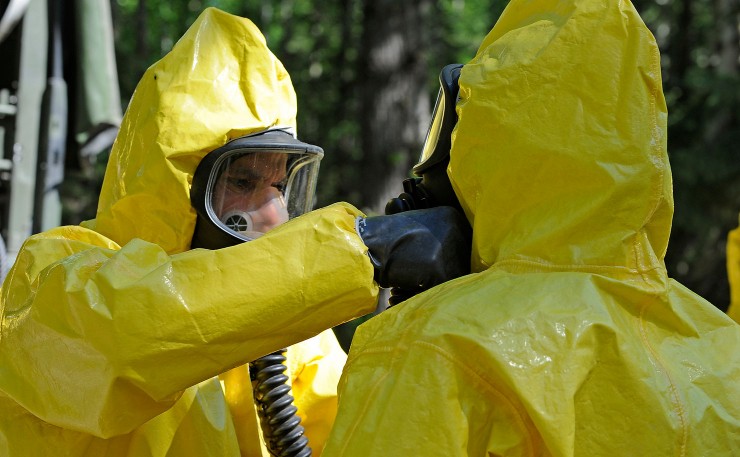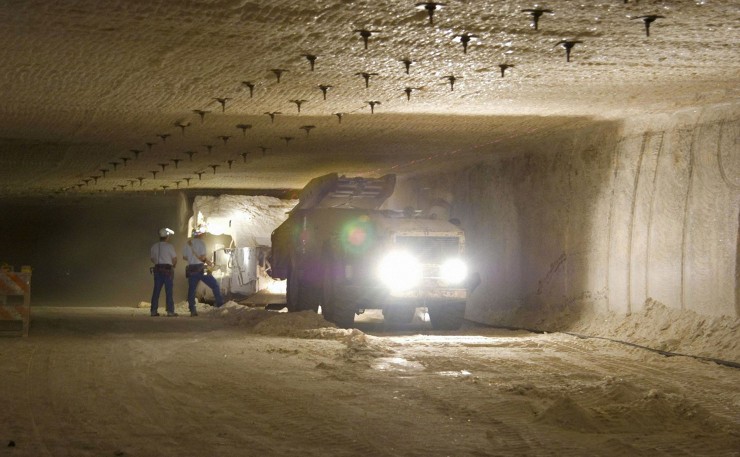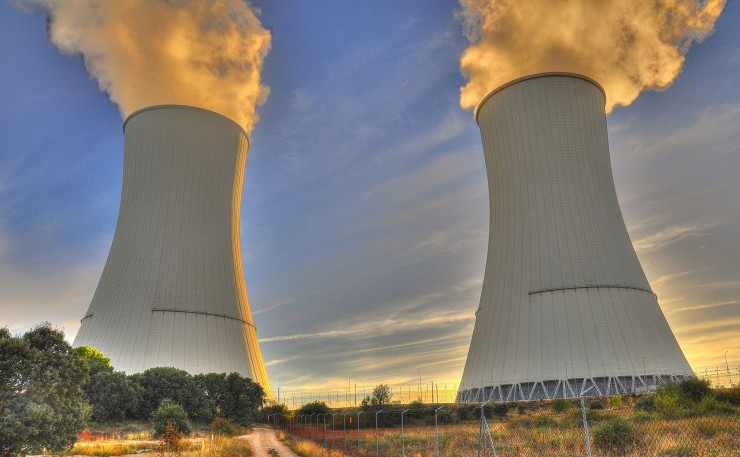There are many good reasons why Australia should not set its sights on becoming a dumping ground for nuclear waste. Dr Jim Green takes up the case.
While sceptical about the prospects for nuclear power in Australia, Prime Minister Malcolm Turnbull has given cautious support to the idea of a nuclear fuel leasing industry in Australia.
Such an industry would involve uranium mining, conversion (to uranium hexafluouride), enrichment (increasing the ratio of uranium-235 to uranium-238), fuel fabrication, and disposal of the high-level nuclear waste produced by the use of nuclear fuel in power reactors overseas.
In the Prime Minister’s words: “We have got the uranium, we mine it, why don’t we process it, turn it into the fuel rods, lease it to people overseas, when they are done, we bring them back and we have got stable, very stable geology in remote locations and a stable political environment.”
Regardless of its merits, a nuclear leasing industry is an economic non-starter. That much is clear from the data provided in the latest edition of the International Atomic Energy Agency’s Nuclear Technology Review.
Uranium miners could be compelled to participate in an Australian nuclear leasing industry. But try telling that to BHP Billiton. The company bluntly stated in its submission to the 2006 Switkowski Review: “BHP Billiton believes that there is neither a commercial nor a non-proliferation case for it to become involved in front-end processing or for mandating the development of fuel leasing services in Australia.”
And there’s no point appealing to the patriotic fervour of Australia’s uranium miners: they are majority foreign-owned.
Of course, sustained and significant nuclear power growth would boost demand for nuclear fuel cycle industries such as conversion and enrichment. But despite an awful lot of rhetoric about a nuclear ‘renaissance’, there are fewer operating reactors today than there were a decade ago.
And it’s doubtful whether new reactors will outnumber closures over the next 20 years.

Steve Kidd, an independent consultant and economist who worked for the World Nuclear Association for 17 years, noted earlier this year that the “picture of the current reactors gradually shutting down with numbers of new reactors failing to replace them has more than an element of truth given the recent trends”.
The International Energy Agency predicts a “wave of retirements” with almost 200 reactor shut downs by 2040.
Accepting nuclear waste might be profitable. Or it might not. Proponents are talking up the billions that might be made by swallowing our pride and making Australia the world’s nuclear waste dump. But they have been silent about the costs.
Since the volume of waste would presumably be large (as a commercial venture), the cost of a deep underground repository for high-level nuclear waste would likely be in the tens of billions of dollars. Plans for a high level waste repository in Japan may be comparable: the estimated cost is ¥3,500 billion (A$40.8 billion).
And the waste would need to be monitored and problems addressed for millenia: it takes about 300,000 years for the radioactivity of spent nuclear fuel to fall to that of the original uranium ore. The annual cost of monitoring waste might be modest; the costs over millenia would be anything but.
The idea that nuclear waste can be safely disposed of in a deep underground repository has been shot to pieces by an explosion in the world’s only deep underground repository for nuclear waste − the Waste Isolation Pilot Plant (WIPP) in the US state of New Mexico.
In February 2014, radiation leaks were detected and 22 workers were subjected to low-level internal radiation exposure. The cause was later determined to be a chemical explosion which compromised one of the radioactive waste barrels stored underground, followed by a failure of the filtration system which was meant to ensure that radiation in underground caverns did not reach the outside environment.
Unsurprisingly, WIPP is currently closed.

One deep geological repository for long-lived nuclear waste in the world: one failure. The total cost to fix up the mess will approach $1 billion, and WIPP will be shut for at least four years.
Robert Alvarez, a former assistant to the US energy secretary, noted that a safety analysis conducted before WIPP opened predicted that one radiation release accident might occur every 200,000 years. But WIPP has been open for just 15, so it’s on track for over 13,000 radiation release accidents over a 200,000 year period.
Is there any reason to believe that Australia would manage a deep underground repository any more responsibly than the US? No.
Is there any reason to believe that things might be worse in Australia? Yes.
The US has a wealth of nuclear expertise at its disposal; Australia has comparatively little.
Moreover, Australia has its own sordid history dealing with long-lived nuclear waste. In the late-1990s, the Australian government carried out a clean-up of the Maralinga nuclear test site. It was done on the cheap and many tonnes of plutonium-contaminated debris remain buried in shallow, unlined pits in totally unsuitable geology.
A number of scientists with inside knowledge of the Maralinga project publicly noted their concerns. Nuclear engineer Alan Parkinson said of the ‘clean up’: “What was done at Maralinga was a cheap and nasty solution that wouldn’t be adopted on white-fellas land.”
US scientist Dale Timmons said the government’s technical report was littered with “gross misinformation”. Geoff Williams, an officer with the Commonwealth nuclear regulator ARPANSA, said the ‘clean up’ was beset by a “host of indiscretions, short-cuts and cover-ups”. Nuclear physicist Prof. Peter Johnston said there were “very large expenditures and significant hazards resulting from the deficient management of the project”.
Barely a decade after the Maralinga ‘clean-up’, a survey revealed that 19 of the 85 contaminated debris pits have been subject to erosion or subsidence.
Australia’s demonstrated incompetence feeds back into the economic debate. Some − perhaps many − countries would surely think twice about entrusting nuclear waste to a country that has already proven that it is not up to the task.
* Dr Jim Green is the national nuclear campaigner with Friends of the Earth, Australia.
* Geoff Russell has written a piece in response to this article, which you can read here.
Donate To New Matilda
New Matilda is a small, independent media outlet. We survive through reader contributions, and never losing a lawsuit. If you got something from this article, giving something back helps us to continue speaking truth to power. Every little bit counts.





